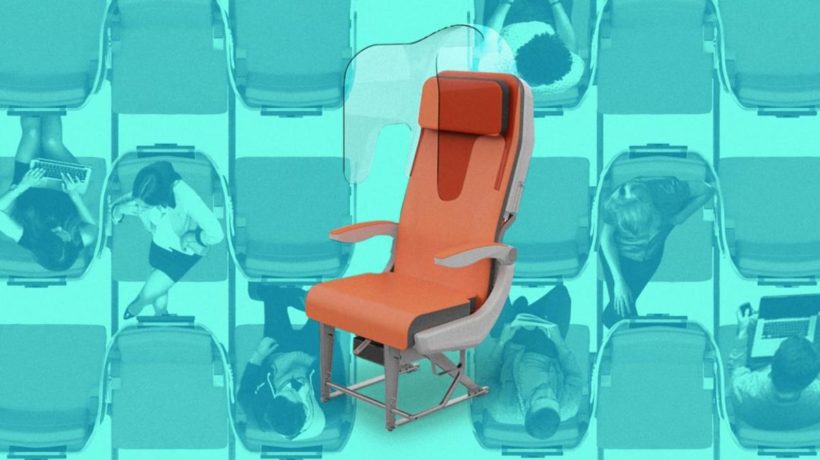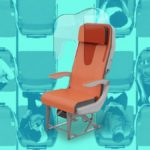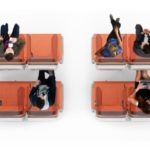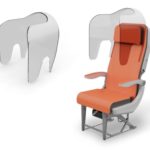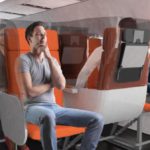The idea of packing into a small, enclosed space with a crowd of people never had much appeal to me. Now, it has less appeal than ever.
The International Air Transport Association reported that the airline industry will see a 48% reduction in passenger demand and a 55% decline in passenger revenue this year as compared to 2019. Some airlines are introducing temporary measures to allow more space between passengers and reduce the spread of germs, such as blocking off the dreaded middle seat. But one design firm has taken it a step further and developed a concept that redesigns the airplane seat itself—and it could change the way we fly for good in a post-coronavirus world.


The Italian company Avio Interiors released two new seat concepts that are designed to reduce the spread of germs in these notoriously tight spaces. The first concept, Janus, reverses the position of the middle seat so that it faces the back of the plane and separates passengers in the same row with a transparent guard that wraps around the sides and back of each seat. Hypothetically, this would prevent you from spreading germs to the passengers on either side of you, even though you’re mere inches away.
The second concept, Glassafe, adapts current seat designs by installing the transparent shield guard between forward-facing seats, isolating each passenger from the shoulders up. This version still leaves your arms exposed, though, making them susceptible to germs contracted through direct contact with your neighbor if you happen to be battling for that middle armrest.


The aviation news site FlightGlobal writes that Janus seats could be ready in as little as six months and the Glassafe model could be ready in two (if they pass regulations). Whether or not these new concepts ever make it into the airplanes of the future, they show that the coronavirus is evolving the way we design shared spaces. Air travel is about to look a lot different—that is, if any of us feel comfortable stepping into an airplane cabin anytime soon.

